Xanthorrhoeas - An Australian Explosive
By Stacey Larner, Librarian, Queensland Memory | 9 July 2021
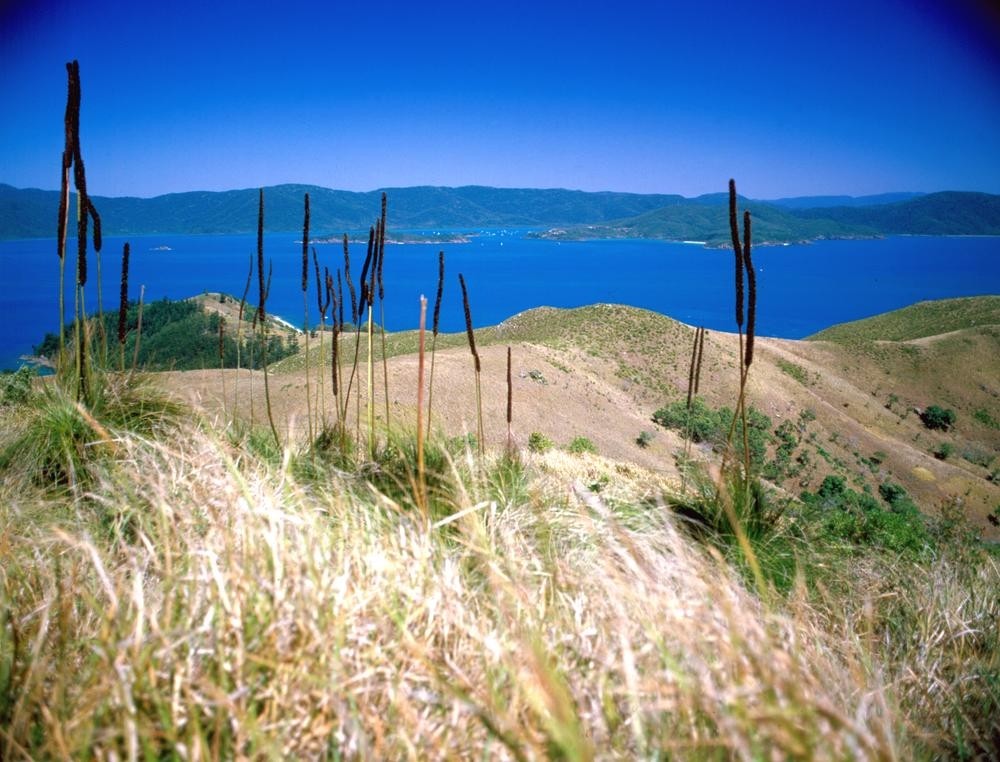
Panoramic views from a grass-treed ridge on South Molle Island to the Whitsundays, North Queensland, 1985. Image number 509-13-15, 7435 Ron and Ngaire Gale Collection, John Oxley Library, State Library of Queensland.
This distinctive plant genus is found only in Australia, and different species occur in all states and territories. A living fossil, it was one of the first flowering plants to evolve. Like eucalypts, it has adapted to bushfire, which plays an important role in its lifecycle by triggering flowering.
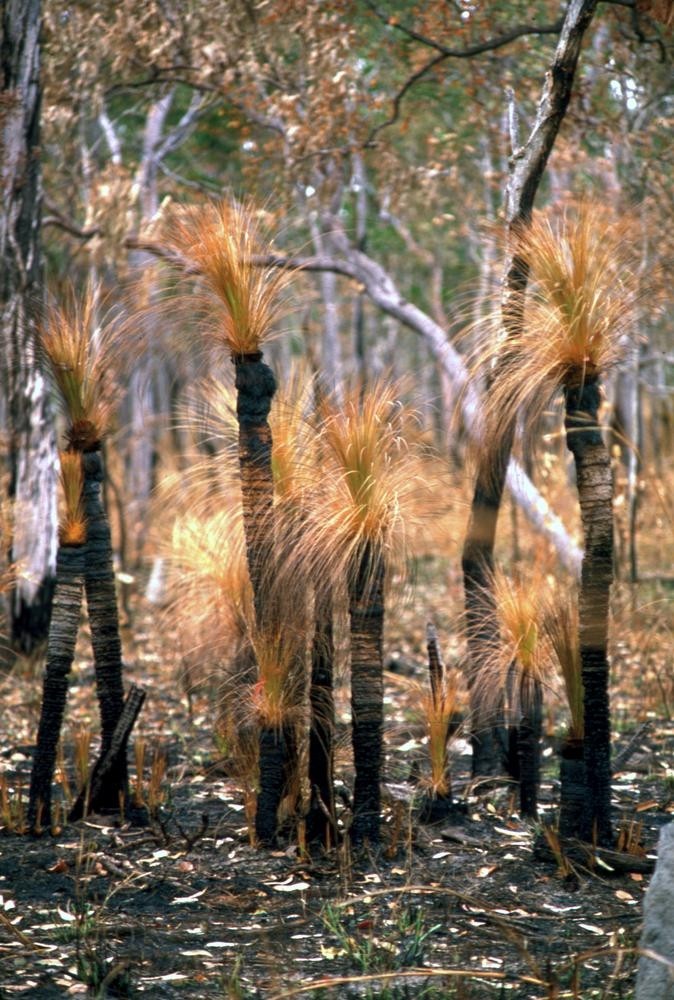
Grass trees with singed leaves near the Cape York Road, 1984. Image number 407-26-36, 7435 Ron and Ngaire Gale Collection, John Oxley Library, State Library of Queensland.
Well before European colonisation, xanthorrhoeas were an incredibly important plant for First Nations people. The long flower stem (in botanical terms this is known as a ‘scape’) was used as a lightweight spear shaft; the resin was used as glue or waterproofing varnish; the flowering scape could be soaked in water to make a sweet drink; and the seeds could be ground into flour.
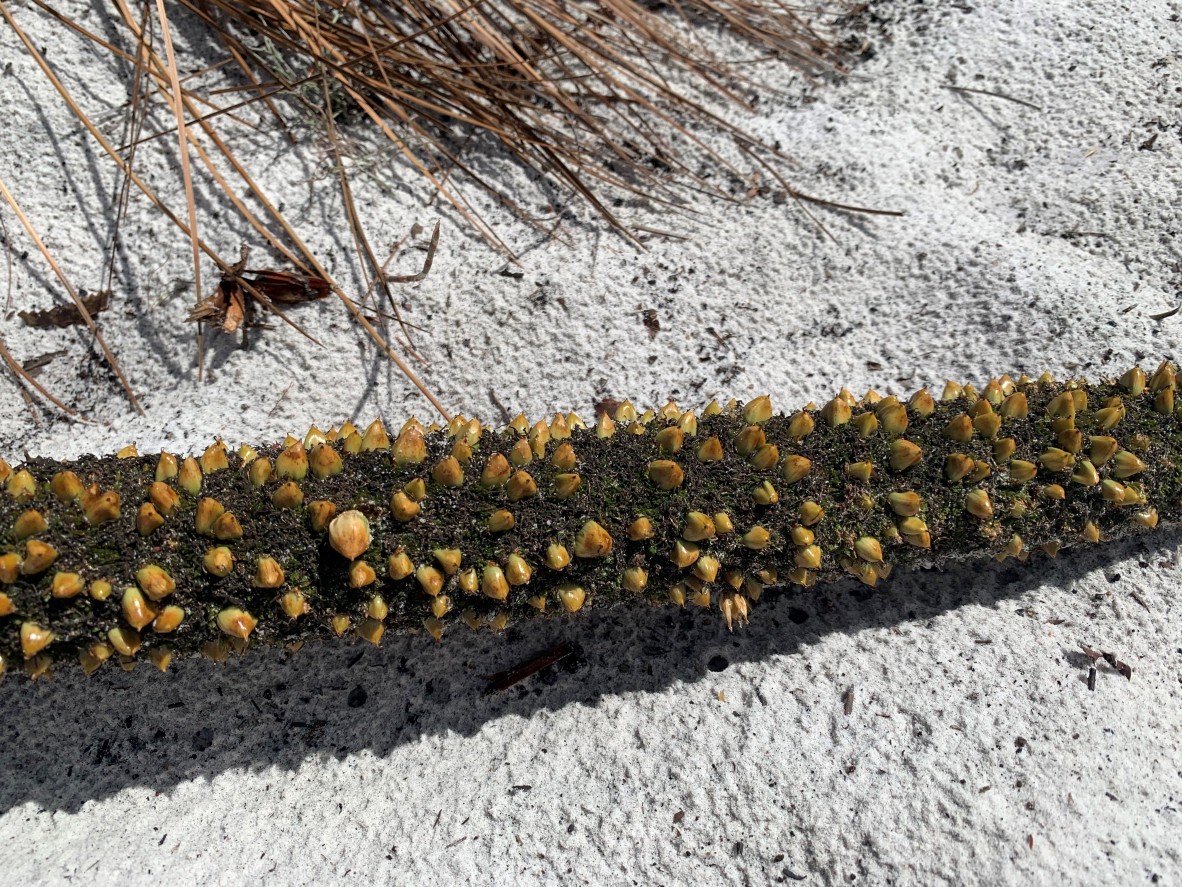
Grass tree seed head, Great Sandy National Park, on Gubbi Gubbi Country. Photograph taken by Stacey Larner.
Wujal Wujal men continue to make spears using grass tree resin for younger boys to hunt with during the mullet season in September. Bobby Ball can be seen in the following photographs collecting the resin from a fire-singed grass tree.
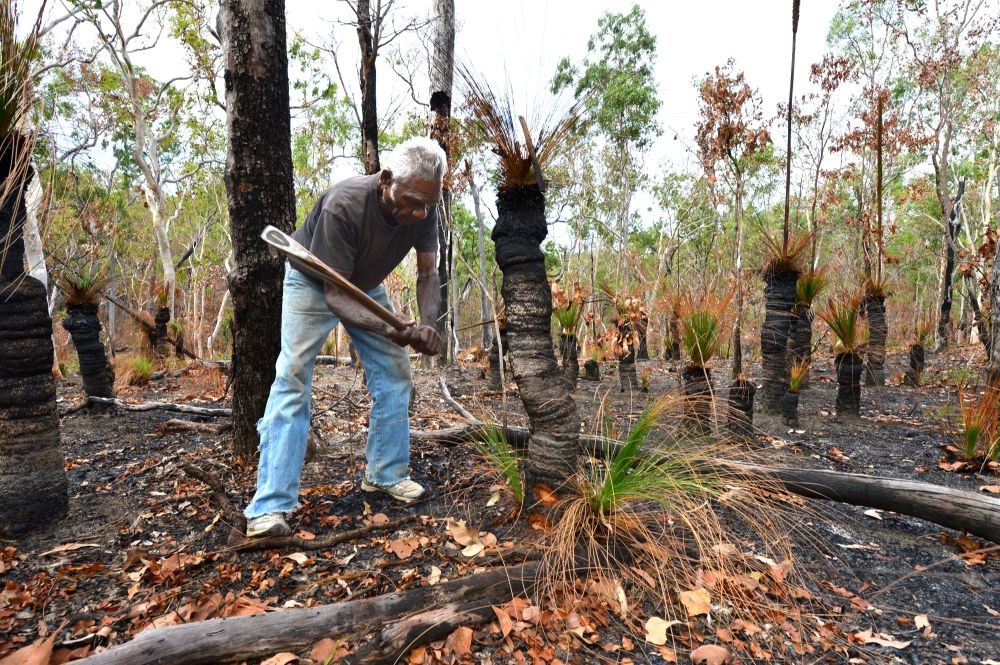
Bobby Ball collecting resin from a burnt grass tree. Image number 30201-0003-0015, Darren Clark Wujal Wujal Photographs, John Oxley Library, State Library of Queensland.
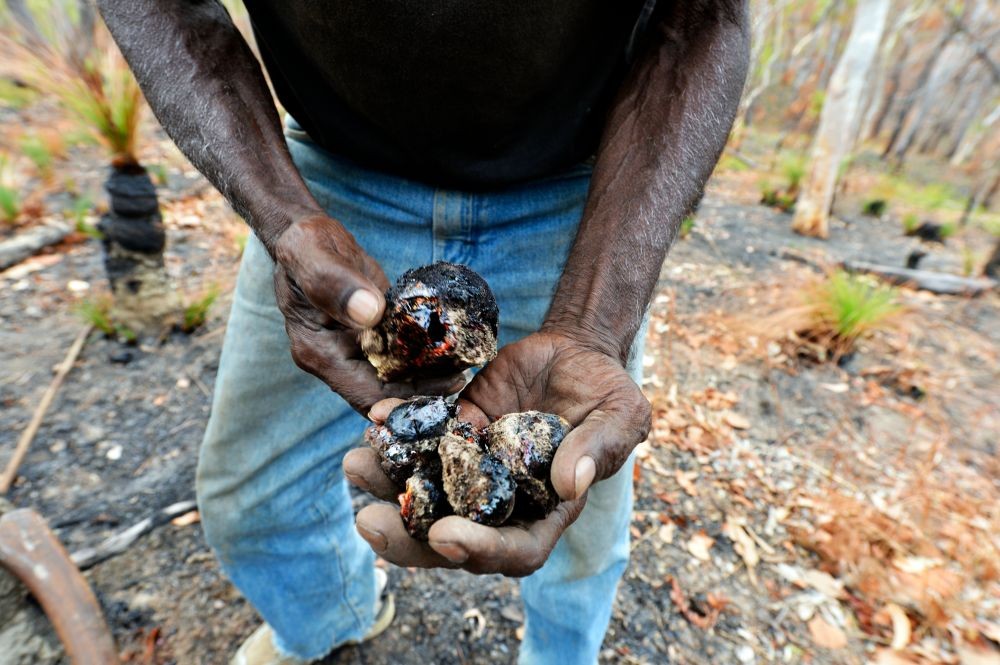
Bobby Ball collecting resin from a burnt grass tree. Image number 30201-0003-0031, Darren Clark Wujal Wujal Photographs, John Oxley Library, State Library of Queensland.
Early Europeans were fascinated by Xanthorrhoeas as they were unlike any plant previously encountered. They are related to lilies and grasses---indeed, the common name “grass tree” is accurate as the trunks and branches of the tree varieties are literally made out of the leaf bases, not wood.
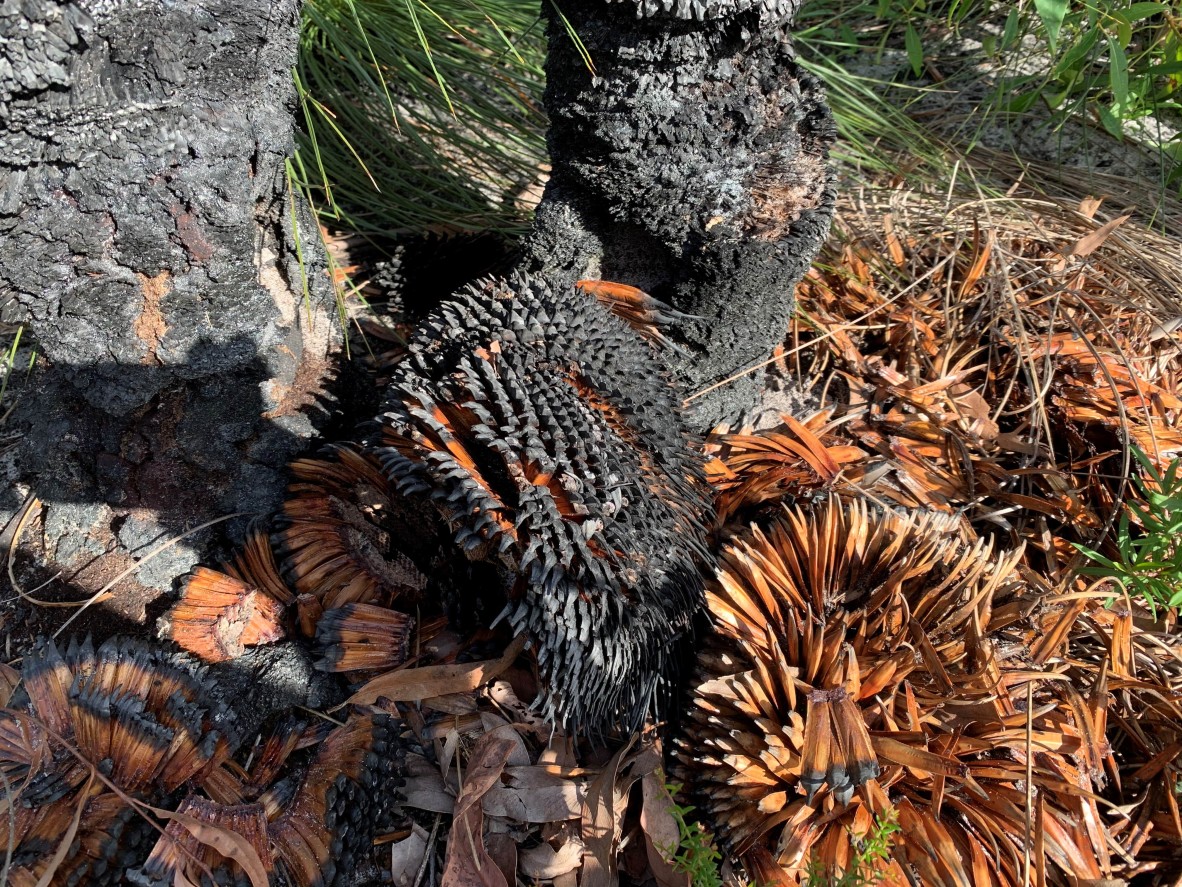
Burnt grass trees in the Great Sandy National Park after the 2019 bushfires, on Gubbi Gubbi Country. Photograph taken by Stacey Larner.
It was the resin that inspired their scientific name: xanthorrhoea means “yellow flow” in Latin. Arthur Phillip dubbed the plant the Yellow Gum Tree in his Voyage of Governor Phillip to Botany Bay.
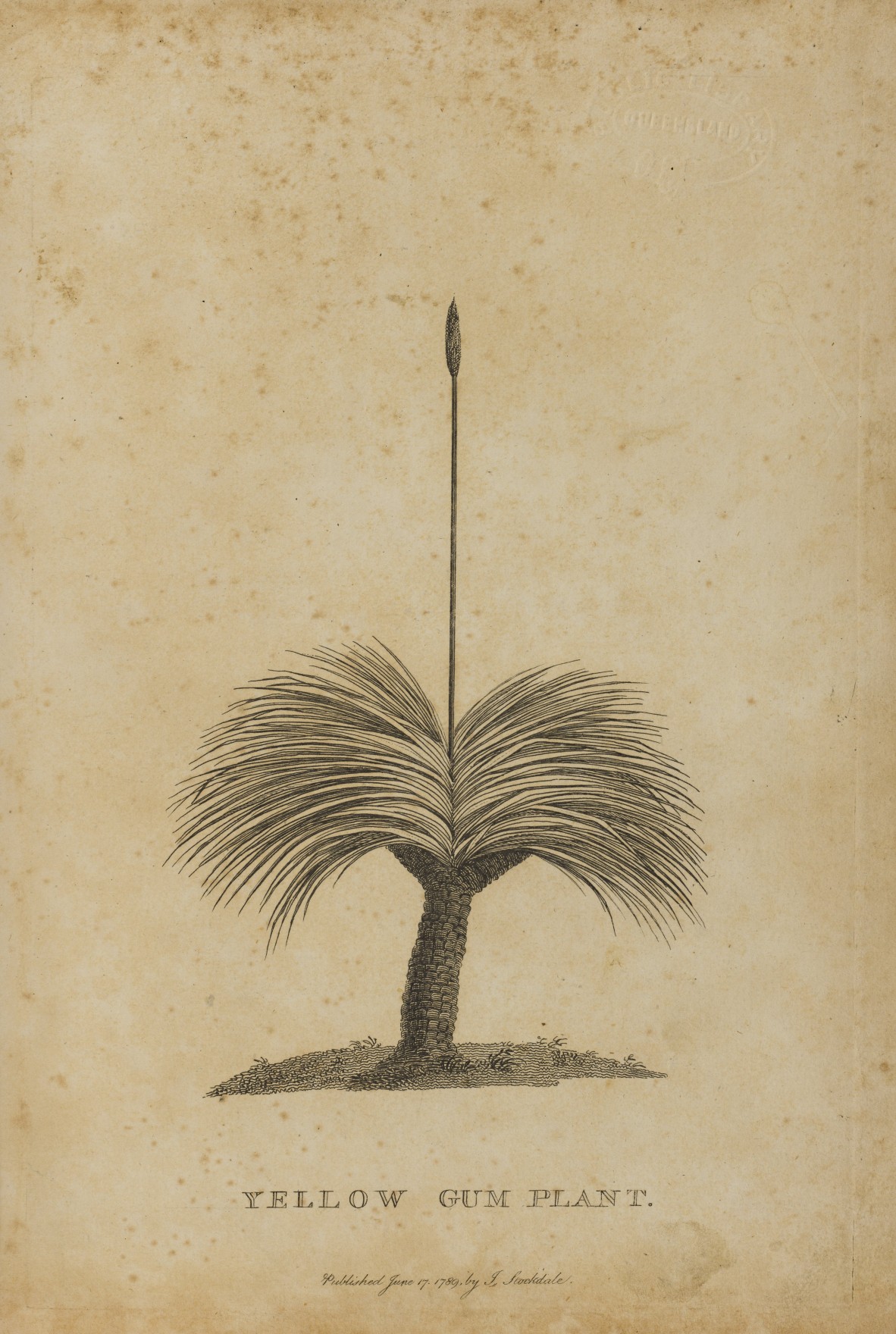
Yellow Gum Plant. Drawing from: The Voyage of Governor Phillip to Botany Bay, with an Account of the Establishment of the Colonies of Port Jackson & Norfolk Island : Comp. from Authentic Papers, Which Have Been Obtained from the Several Departments, to Which Are Added the Journals of Lieuts. Shortland, Watts, Ball & Capt. Marshall, with an Account of Their New Discoveries / Embellished with 55 Copper Plates, the Maps and Charts Taken from Actual Surveys, & the Plans & Views Drawn on the Spot by Capt. Hunter, Lieuts. Sho (1789).
Arthur Phillip 1738-1814 ; London : printed for John Stockdale ; 1789, John Oxley Library, State Library of Queensland.
The resin was also used by European colonists in a variety of ways, including burning as incense in churches, and manufacturing varnishes and coatings.
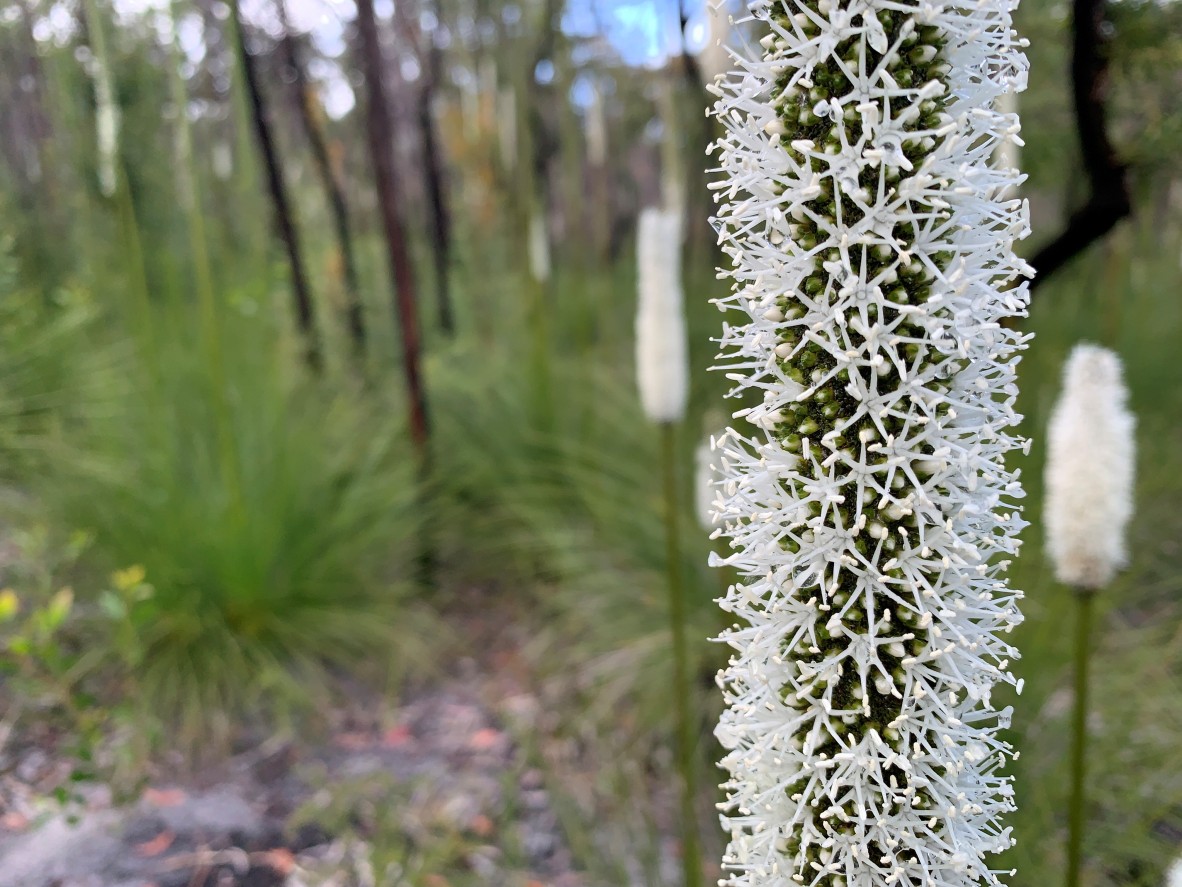
Flowering grass trees in the Great Sandy National Park, on Gubbi Gubbi Country. Photograph taken by Stacey Larner.
In 1915 there was considerable consternation over the realisation that German agents had been buying “immense quantities of grass tree gum for the past quarter of a century”, presumably for the purpose of manufacturing explosives. The explosive containing grass tree resin was reported as more explosive than dynamite in experiments at the time.
Grass trees, uniquely Australian, useful and photogenic, are featured in both the Entwined: plants and people exhibition and Kindred Spirits: plants and people publication. Kindred Spirits: plants and people is available to purchase from the Library Book Shop. With text by Shannon Brett, featuring images from State Library’s collection and more, it explores the ancient and ongoing connection between First Nations people and plants in Queensland. This publication was developed in response to the Entwined: plants and people exhibition which is open in the slq Gallery, level 2 until 14 November 2021.
Other blogs relating to Entwined: plants and people
- Queensland's fern fever
- Keeping culture alive through weaving
- Orchidelirium: when love turns to obsession
- Queensland’s coastal kidneys: mangroves
- Bountiful bunyas : a charismatic tree with a fascinating history
- The grand florilegiums of Joseph Banks and Ferdinand Bauer
- Queensland’s gympie-gympie: the world’s most painful plant
Comments
Your email address will not be published.
We welcome relevant, respectful comments.